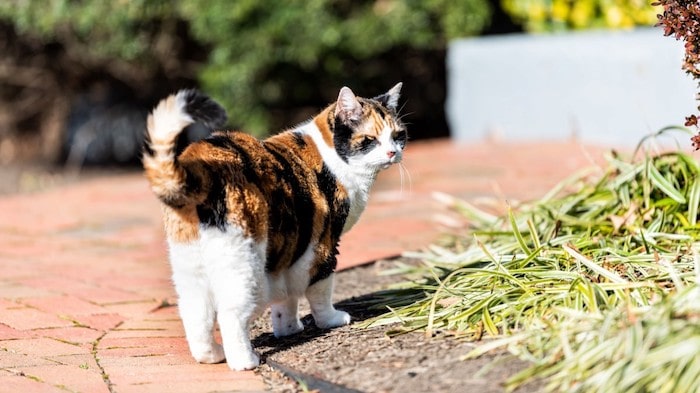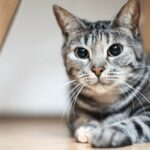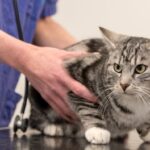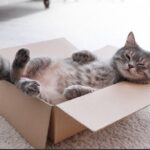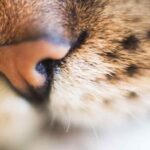If you’ve ever noticed your cat’s hind legs appearing unusually close together or turned inward, you may be witnessing this intriguing phenomenon. In this article, we will explore what cow hocking in cats entails, the potential causes behind it, the common symptoms to watch for, and the available treatment options.
Whether you’re a concerned cat owner or simply curious about feline anatomy, join us as we unravel the mysteries of cow hocking in cats and uncover ways to ensure our furry friends lead healthy, active lives. So, let’s dive in and learn more about this fascinating condition that impacts our feline companions.
What Is Cow Hocked Deformity in Cats?
Cow hocked deformity is a term used to describe a specific physical condition in cats where the hind legs turn inward, causing the hocks (the joints in the hind legs) to appear closer together. This can be due to genetics or injury.
The hock joint is located between the tibia (the bone in the lower part of the hind leg) and the tarsus (the bone in the foot). It is equivalent to the human ankle. The normal alignment of the hock joint is perpendicular to the ground, which allows the cat to walk and run with ease.
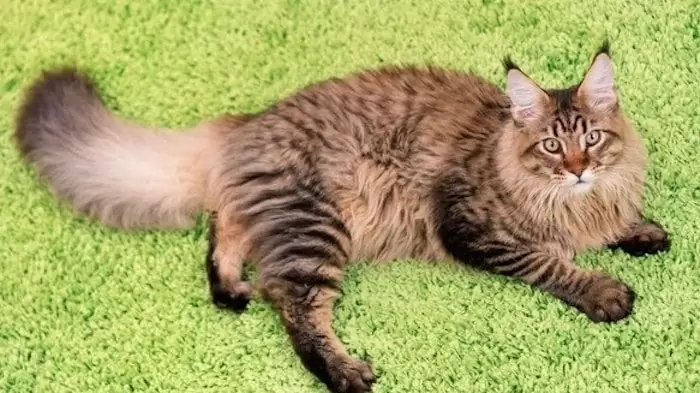
However, when a cat has cow hocked deformity, the hock joint is angled inward instead of being perpendicular. This causes the knees and toes of the hind legs to point outward instead of being parallel. The result is a bowlegged appearance that resembles the body structure of cattle. Hence, the name cow hocked.
Cow hocked deformity can affect the cat’s balance, coordination, and movement. It can also put stress on the joints, muscles, tendons, and ligaments of the hind legs, leading to pain and inflammation. Over time, cow hocked deformity can also cause damage to the spine or nerves, as well as increase the risk of injury or infection.
What Causes Cow Hocked Deformity in Cats?
Cow hocked deformity in cats can have various causes, ranging from genetic factors to environmental influences. Some of the possible causes are:
- Genetic factors: Some breeds or lines of cats may have a genetic predisposition to cow hocked deformity. For example, some Persian cats may have a shorter and more curved femur (the bone in the upper part of the hind leg) than other breeds, which can result in cow hocked legs. Other breeds that may be more prone to cow hocked deformity include Himalayan, Scottish Fold, Munchkin, and Manx.
- Developmental issues: Some cats may develop cow hocked deformity during their growth period, especially if they are exposed to poor nutrition, inadequate exercise, or overcrowding. These factors can affect the development of the bones, muscles, tendons, and ligaments in the hind legs, leading to abnormal alignment and angulation.
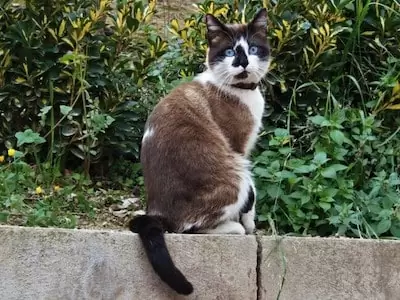
- Nutritional imbalances: A lack of certain nutrients, such as calcium, phosphorus, vitamin D, or protein, can also cause cow hocked deformity in cats. These nutrients are essential for the proper formation and maintenance of the skeletal system. A deficiency or excess of these nutrients can lead to weak or malformed bones and joints.
- Medical conditions: Some medical conditions can also cause or contribute to cow hocked deformity in cats. For example,
- Diabetes can cause nerve damage or neuropathy in the hind legs
- Arthritis can cause inflammation or degeneration of the joints
- Trauma or injury can cause fractures or dislocations of the bones
- Infections can cause swelling or abscesses of the tissues
- Tumors can cause compression or invasion of the nerves
Symptoms And Consequences Of Cow Hocked Deformity In Cats
The main symptom of cow hocked deformity in cats is the visible sign of their legs bowing or turning inward. However, there are other symptoms and consequences that can affect the cat’s health and well-being. Some of these are:
- Difficulty walking, running, jumping, or climbing: Cow hocked deformity can impair the cat’s ability to perform normal activities that require balance, coordination, and movement. The cat may have a wobbly, unstable, or awkward gait. The cat may also have trouble jumping or climbing on furniture or other surfaces. The cat may also tire easily or avoid physical activity altogether.
- Reduced balance, coordination, and agility: Cow hocked deformity can affect the cat’s sense of balance, coordination, and agility. The cat may have difficulty standing or sitting upright. The cat may also have trouble turning, twisting, or changing direction. The cat may also be more prone to falling or stumbling.
- Limping or favoring one leg over another: Cow hocked deformity can cause pain or discomfort in the hind legs. The cat may limp or favor one leg over another to relieve the pressure or pain. The cat may also lick, bite, or scratch the affected area to soothe the irritation or inflammation.
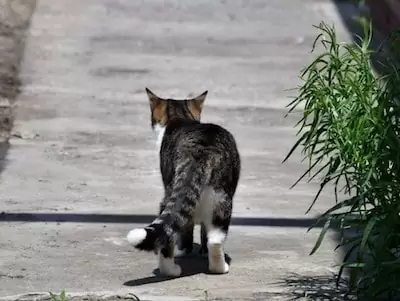
- Early-onset arthritis or joint pain: Cow hocked deformity can put stress on the joints of the hind legs, causing them to wear out faster than normal. This can lead to arthritis or joint pain, which can worsen over time. Arthritis or joint pain can cause stiffness, swelling, reduced range of motion, and reduced function of the joints.
- Damage to the spine or nerves: Cow hocked deformity can affect the alignment and stability of the spine. This can cause pressure or damage to the spinal cord or nerves that run through the spine. This can lead to neurological problems, such as numbness, tingling, weakness, paralysis, or loss of sensation in the hind legs.
- Increased risk of injury or infection: Cow hocked deformity can make the cat more vulnerable to injury or infection. The abnormal position of the hind legs can expose them to cuts, scrapes, bruises, or bites from other animals or objects. The impaired movement of the hind legs can also make it harder for the cat to escape from predators or dangers. The compromised immune system of the cat can also make it more susceptible to infections from bacteria, fungi, viruses, or parasites.
- Reduced quality of life or lifespan: Cow hocked deformity can affect the cat’s quality of life or lifespan. The cat may experience chronic pain, discomfort, or disability that can interfere with its daily activities and happiness. The cat may also develop secondary complications or conditions that can worsen its health and well-being. The cat may also have a shorter lifespan than normal due to the increased risk of mortality.
Treatment and prevention options for cow hocked in cats
The treatment and prevention options for cow hocked in cats depend on the severity and cause of the condition. Some of the possible options are:
- Surgery: In some cases, surgery may be recommended to correct the deformity or to relieve the pressure on the joints or spine. Surgery may involve cutting, reshaping, or fusing the bones, or inserting implants or pins to stabilize the joints.
- Medication: In some cases, medication may be prescribed to reduce the pain, inflammation, or infection associated with cow hocked deformity. Medication may include anti-inflammatory drugs, antibiotics, steroids, or supplements.
- Physical therapy: In some cases, physical therapy may be advised to improve the strength, flexibility, and range of motion of the hind legs. Physical therapy may include exercises, massage, acupuncture, laser therapy, or hydrotherapy.
- Diet and nutrition: In some cases, diet and nutrition may be modified to prevent or manage cow hocked deformity. Diet and nutrition may include providing a balanced and complete diet that meets the cat’s nutritional needs, avoiding overfeeding or underfeeding, supplementing with calcium, phosphorus, vitamin D, or protein if needed, or avoiding foods that may trigger allergies or inflammation.
- Lifestyle changes: In some cases, lifestyle changes may be suggested to prevent or manage cow hocked deformity. Lifestyle changes may include providing adequate space and exercise for the cat, avoiding obesity or malnutrition, preventing injuries or accidents, or providing a comfortable and supportive environment for the cat.
FAQ
Is Cow Hocking in cats a common condition?
No, Cow Hocking is not a common condition in cats. It is relatively rare and usually a result of genetic factors or certain developmental issues.
Is Cow Hocking in cats painful for the affected feline?
In most cases, Cow Hocking itself doesn’t cause pain to the cat. However, if the condition is severe or accompanied by other musculoskeletal issues, it might lead to discomfort or difficulty in movement.
Can kittens outgrow Cow Hocking as they mature?
In some cases, kittens may appear cow hocked during their early growth stages, but they might outgrow the condition as they develop and their bones and muscles strengthen. However, for certain breeds or more severe cases, the condition might persist into adulthood.
Can Cow Hocking in cats lead to other health problems?
In some cases, Cow Hocking might be associated with other musculoskeletal issues, such as hip dysplasia or arthritis, which can potentially lead to further health problems if not managed properly.
Final Thoughts
In conclusion, Cow Hocked in cats is a relatively rare conformational issue where the hind legs turn inward, resembling the hind legs of a cow. While it is not a common condition, it can occur in certain breeds and may have hereditary roots.
Although Cow Hocking itself may not be painful, severe cases or accompanying musculoskeletal problems could cause discomfort. While treatment and correction options exist, prevention through responsible breeding practices is essential.
If you suspect your cat may be Cow Hocked, seeking veterinary evaluation is crucial to determine the best course of action for their well-being.

